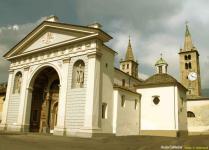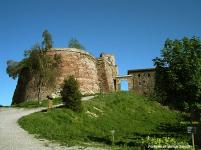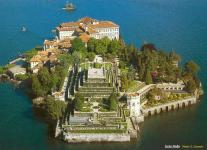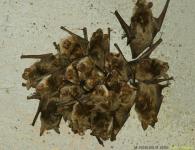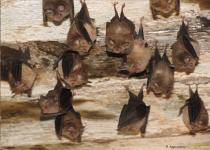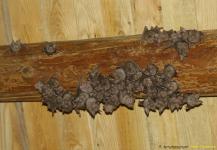The project was conducted by the Stazione Teriologica Piemontese (S.Te.P., c/o Museo Civico di Storia Naturale di Carmagnola, TO) between January 2010 and December 2010, funded by the Italian Ministero dell’Ambiente e della Tutela del Territorio e del Mare and the French Ministère de l’Écologie, de l’Énergie, du Développement durable et de la Mer.
The general aims of the project were to raise public awareness of the impact of artificial lighting on bats, with particular reference to the consequences of monumental building lighting, and to maintain/restore natural dark conditions around monumental buildings known to be used as roosting sites by colonies of bats of special conservation interest. Activities were carried out in NW-Italy (Liguria, Piedmont and Aosta Valley), hereafter referred to as study area.
Information material was produced, including: a divulgation leaflet (in Italian) aimed at informing the public at large; a brief document (in Italian) giving basic technical information about bats and lighting; a second brief document (in Italian, written in collaboration with CieloBuio, an association interested in the reduction of light pollution for astronomical and energetic reasons) containing suggestions to render Italian legislation on light pollution more effective in protecting bats and other wildlife; a more comprehensive document (in Italian and English) providing detailed information about the same topics. All the documents and a pdf version of the leaflet can be downloaded from: http://www.centroregionalechirotteri.org/progetto_eurobats.html
Information has been disseminated through websites, mailing, direct meetings and during popular events and technical conferences, taking particular care to reach local administrations (Municipalities) and authorities involved in the conservation of buildings which are part of the cultural heritage (Soprintendenze). Conservation activities were performed at 13 out of 15 monumental buildings known to be used by important bat colonies in the study area.
In three cases (Isola Bella, Fortress of Verrua Savoia, Reggia of Venaria) pre-existent lighting was turned off, in one case (Staffarda Abbey) lighting which had been just realized was kept off (during bat occurrence period), in four cases (Aosta Cathedral, Fortress of Verrua Savoia, Reggia of Venaria, Castle of Racconigi) lighting planners who were working at new lighting projects were asked to preserve dark areas, and in seven cases (Castle of Agliè and six churches which cannot be identified for conservation reasons), in the absence of any lighting or lighting prevision, the conservation action simply consisted in providing information and getting authorities involved in maintaining present conditions. With respect to the overall maternity colonies known in the study area, conservation activities affected the only colony of M. capaccinii, one of the two colonies of R. ferrumequinum, the three largest colonies of M. myotis/M. blythii and six of the eight colonies of R. hipposideros.
At the end of the project period, we had not yet reached our goals for two further sites because of the reticence of authorities to “turn off” the buildings. One case involved a colony of R. hipposideros inside a small church, the other concerned the Mole Antonelliana, symbol building of Turin and roost site for a colony of Tadarida teniotis. Further work should be done for these cases.
For more details on the project cases see http://www.centroregionalechirotteri.org/introd_eurobats_it.html (in Italian) or http://www.centroregionalechirotteri.org/introd_eurobats_en.html (in English). The webpage comprises two parts: Part 1 concerns sites that can be published, Part 2 is about those sites that must be cited without identifying data for conservation reasons.
We invite operators who work in countries which are Parties and/or Range States to EUROBATS to submit similar cases for publication on the webpage. Each published case represents an example of integrated protection of natural and cultural heritage which can be replicated elsewhere, amplifying its conservation value.
